 Soviet Military Power
Soviet Military Power Soviet Military Power
Soviet Military Power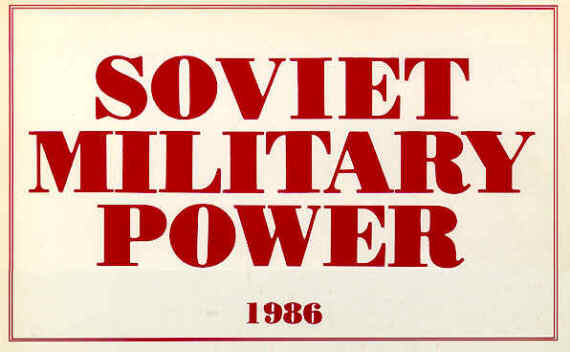
The Soviet Union has pressed ahead with the development and deployment of new generations of increasingly capable land, sea, and air forces for nuclear attack. Modernization of the fourth generation of intercontinental ballistic missiles (ICBMs) is essentially complete. In clear violation of the SALT II Treaty, deployment of a fifth-generation ICBM, the SS-25, has begun, and its deployment has been undertaken in a manner that violates SALT I. This highly survivable weapon system represents the world's first operationally deployed road-mobile ICBM. Development continues apace on the SS-X-24, which could be deployed in a rail-mobile version this year.
The Soviets' strategic nuclear-powered ballistic missile submarine (SSBN) force remains the largest in the world. Construction continues on several new TYPHOON-Class SSBNs. The SS-NX-23, the USSR's most capable long-range submarine-launched ballistic missile (SLBM), is nearing operational status. It is deployed on the DELTA IV and probably will be deployed on DELTA III SSBNs.
The USSR currently has three manned intercontinental-capable bombers in development and production - the BEAR H, the BLACKJACK, and the BACKFIRE. Newly built BEAR H bombers are the first launch platform for the long-range AS-15 air-launched cruise missile (ALCM).
Projections for the years ahead are:
- Additional TYPHOON-Class submarines, BLACKJACK and BEAR H bombers,and SS-X-24 ICBMs, all carrying many more warheads than the systems they are replacing, will be deployed.
- By 1990, if the Soviets continue to maintain over 2,500 missile launchers and heavy bombers and even if they are within the quantitative sublimits of SALT II, the number of deployed warheads will grow to over 12,000.
- Although the Soviets would not necessarily expand their intercontinental attack forces beyond some 12,000 to 13,000 warheads, they clearly have the capability to do so. Based on recent trends, even under SALT, the Soviets could deploy over 15,000 warheads, or by violating SALT, over 20,000 warheads by the mid-199Os.
The modernization and upgrading of these strategic forces have been paralleled by growth and increased capabilities of the Soviets' longer range intermediate-range nuclear force (LRINF) and short-range ballistic missile (SRBM) systems deployed with Soviet combat forces. Significant improvements in nuclear capable aircraft as well as increases in tactical missiles and nuclear artillery have also occurred.
Soviet leaders since the 1960s have followed a consistent and relentless policy for the development of forces for nuclear attack. The Soviet leadership recognizes the catastrophic consequences of a general nuclear war. However, Soviet military forces have taken actions and exhibited behavior which indicate that they believe a nuclear war could be fought and won at levels below general nuclear war. The grand strategy of the USSR is to attain its objectives, if possible, by means short of war by exploiting the coercive leverage inherent in superior forces, particularly nuclear forces, to instill fear, to erode the West's collective security arrangements, and to support subversion. Thus, the primary role of Soviet military power is to provide the essential underpinning for the step-by-step extension of Soviet influence and control.
In any nuclear war, Soviet strategy would be to destroy enemy nuclear forces before launch or in flight to their targets, to reconstitute the war base should nuclear weapons reach the Soviet homeland, and to support and sustain combined arms combat in different theaters of military operations. Several overarching strategic wartime missions are:
- to eliminate enemy nuclear-capable forces and related command, control, and communications capabilities;
- to seize and occupy vital areas on the Eurasian landmass; and
- to defend the Soviet state against attack.
These missions would involve:
- disruption and destruction of the enemy's essential command, control, and communications capabilities;
- destruction or neutralization of enemy nuclear forces on the ground or at sea before they could be launched; and
- protection of the Soviet leadership and cadres, military forces, and military and economic assets necessary to sustain the war.
Strategic and theater forces and programs in place or under active development designed to accomplish these objectives include:
- hard-target-capable ICBMs, new submarine-launched ballistic missiles, LRINF ballistic missiles, and land- and sea-based cruise missiles;
- short-range ballistic missiles (SRBMs)and free rocket over ground (FROG) systems deployed with combat troops;
- bombers and ALCMs designed to penetrate US and allied defensive systems;
- large numbers of land attack and antiship cruise missiles on various platforms; antisubmarine warfare (ASW) forces to attack Western nuclear-powered ballistic missile submarines;
- air and missile defenses, including early warning satellites and radars, interceptor aircraft, surface-to-air missiles (SAMs), antiballistic missile (ABM) radars and interceptors, and some antiaircraft artillery;
- antisatellite weapons;
- passive defense forces, including civil defense forces and countermeasures troops and equipment devoted to confusing incoming aircraft; and
- hardened facilities numbering in the thousands, command vehicles, and evacuation plans designed to protect Party, military, governmental and industrial staffs, essential workers, and to the extent possible the general population.
Supporting a land war in Eurasia and eliminating the US capacity to fight and support a conflict would require the capability to employ theater and strategic forces over a variety of ranges and the destruction of:
- military-associated command and control facilities and other assets;
- war-supporting industries, arsenals, and major military facilities;
- ports and airfields in the United States and along air and sea routes to European and Asian theaters of war; and
- satellite surveillance sensors, ground-based surveillance sensors, and related communications facilities.
Soviet nuclear forces are designed and personnel are trained to fulfill their missions under all circumstances. Soviet leaders appear to believe that nuclear war might last weeks or even months and have factored this possibility into their force planning. Despite public rhetoric alleging their commitment to no first-use of nuclear weapons, the Soviets have developed extensive plans either to preempt a nuclear attack or to launch a massive first strike.
The key to a successful preemptive attack would be effective coordination of the strike and accurate intelligence on enemy intentions. Meeting these demands in war requires reliable command, control, and communications under all conditions.
 A launch-under-attack circumstance would place great stress on attack warning systems and launch coordination. To meet the demands of a launch-under-attack contingency, the Soviets have established an elaborate warning system. Satellite, over-the-horizon radar, and early warning systems have been built to provide the Soviet Union with the capability to assess accurately and respond effectively to any nuclear attack. These warning systems could give the Soviets time to launch their nuclear forces very quickly.
A launch-under-attack circumstance would place great stress on attack warning systems and launch coordination. To meet the demands of a launch-under-attack contingency, the Soviets have established an elaborate warning system. Satellite, over-the-horizon radar, and early warning systems have been built to provide the Soviet Union with the capability to assess accurately and respond effectively to any nuclear attack. These warning systems could give the Soviets time to launch their nuclear forces very quickly.
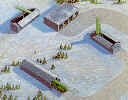 Follow-on strikes would require the survival of the command, control, and communications systems as well as the weapons themselves. The Soviets have invested heavily in providing this survivability. The SS-17, SS-18, and SS-19 ICBMs are housed in the world's hardest operational silos. The Soviets are building silos for the new ABM interceptors around Moscow. To increase its survivability, the SS-20 LRINF missile is mobile. The mobile SS-26 ICBM is being deployed; the development of the mobile SS-X-24 continues; and a mobile surface-to-air missile, the SA-X-12, with some capabilities against certain types of ballistic missiles, is almost operational. The launch-control facilities for offensive missiles are housed in very hard silos or on off-road vehicles. Communications are redundant and hardened against both blast and electro-magnetic pulse damage. Higher commands have multiple mobile alternate command posts available for their use, including land vehicles, trains, aircraft, and ships. Bombers are assigned dispersal airfields. Ballistic missile submarines could be hidden in caves, submerged in deep fjords just off their piers, or dispersed while being protected by Soviet surface and submarine forces.
Follow-on strikes would require the survival of the command, control, and communications systems as well as the weapons themselves. The Soviets have invested heavily in providing this survivability. The SS-17, SS-18, and SS-19 ICBMs are housed in the world's hardest operational silos. The Soviets are building silos for the new ABM interceptors around Moscow. To increase its survivability, the SS-20 LRINF missile is mobile. The mobile SS-26 ICBM is being deployed; the development of the mobile SS-X-24 continues; and a mobile surface-to-air missile, the SA-X-12, with some capabilities against certain types of ballistic missiles, is almost operational. The launch-control facilities for offensive missiles are housed in very hard silos or on off-road vehicles. Communications are redundant and hardened against both blast and electro-magnetic pulse damage. Higher commands have multiple mobile alternate command posts available for their use, including land vehicles, trains, aircraft, and ships. Bombers are assigned dispersal airfields. Ballistic missile submarines could be hidden in caves, submerged in deep fjords just off their piers, or dispersed while being protected by Soviet surface and submarine forces.
 The belief that a nuclear war might be protracted has led to the USSR's emphasis on nuclear weapon system survivability and sustainability. For their ICBM, LRINF, SRBM, SLBM, and air defense forces, the Soviets have stocked extra missiles, propellants, and warheads throughout the USSR. Some ICBM silo launchers could be reloaded, and provisions have been made for the decontamination of those launchers. Plans for the survival of necessary equipment and personnel have been developed and practiced. Resupply systems are available to reload SSBNs in protected waters.
The belief that a nuclear war might be protracted has led to the USSR's emphasis on nuclear weapon system survivability and sustainability. For their ICBM, LRINF, SRBM, SLBM, and air defense forces, the Soviets have stocked extra missiles, propellants, and warheads throughout the USSR. Some ICBM silo launchers could be reloaded, and provisions have been made for the decontamination of those launchers. Plans for the survival of necessary equipment and personnel have been developed and practiced. Resupply systems are available to reload SSBNs in protected waters.
The operational Soviet ICBM force consists of some 1,400 silo and mobile launchers, aside from those at test sites. Some 818 of the silo launchers have been rebuilt since 1972; nearly half of these silos have been refurbished since 1979. All 818 silos have been hardened against attack by currently operational US ICBMs. These silos contain the SS-17 Mod 3 (160 silos), the SS-18 Mod 4 (308), and the SS-19 Mod 3(360), which were the world's most modern deployed ICBMs until the more modern, mobile SS-26 was deployed.
 Each SS-18 and SS-19 ICBM can carry more and larger MIRVs than the Minuteman III, the most modern deployed US ICBM. The SS-18 Mod 4 carries at least ten MIRVs, and the SS-19 Mod 3 carries six, whereas the Minuteman III carries only three. The SS-18 Mod 4
was specifically designed to attack and destroy ICBMs and other hardened targets in the US. The SS-18 Mod 4 force currently deployed has the capability to destroy about 66 to 80 percent of US ICBM silos, using two nuclear warheads against each. Even after this type of attack, over 1,000 SS-18 warheads would be available for further attacks against targets in the US. The SS-19 Mod 3 ICBM, while not identical to the SS-18 in accuracy, has similar capabilities. It could be assigned similar missions and could be used against targets in Eurasia. Although the SS-17 is somewhat less capable than the SS-19, it has similar targeting flexibility.
Each SS-18 and SS-19 ICBM can carry more and larger MIRVs than the Minuteman III, the most modern deployed US ICBM. The SS-18 Mod 4 carries at least ten MIRVs, and the SS-19 Mod 3 carries six, whereas the Minuteman III carries only three. The SS-18 Mod 4
was specifically designed to attack and destroy ICBMs and other hardened targets in the US. The SS-18 Mod 4 force currently deployed has the capability to destroy about 66 to 80 percent of US ICBM silos, using two nuclear warheads against each. Even after this type of attack, over 1,000 SS-18 warheads would be available for further attacks against targets in the US. The SS-19 Mod 3 ICBM, while not identical to the SS-18 in accuracy, has similar capabilities. It could be assigned similar missions and could be used against targets in Eurasia. Although the SS-17 is somewhat less capable than the SS-19, it has similar targeting flexibility.
The remaining Soviet ICBM silos are fitted primarily with the SS-11 Mod 2/3s and SS-18 Mod 2s. These ICBMs of older vintage are housed in less-survivable silos and are considerably less capable. Nevertheless, their destructive potential against softer area targets in the United States and Eurasia is significant in terms of many of the Soviet requirements outlined earlier.
 The most recent development in the Soviets' operational ICBM force occurred with the deployment of their road-mobile SS-26 missile, in violation of SALT I and SALT II. The SS-26 is approximately the same size as the US Minuteman ICBM. It carries a single reentry vehicle and is being deployed in a road-mobile configuration similar to that of the SS-20. As such, it will be highly survivable with an inherent refire capability. Several bases for the SS-26 are operational, with a total of over 70 launchers deployed. They consist of launcher garages equipped with sliding roofs and several support buildings to house the requisite mobile support equipment.
The most recent development in the Soviets' operational ICBM force occurred with the deployment of their road-mobile SS-26 missile, in violation of SALT I and SALT II. The SS-26 is approximately the same size as the US Minuteman ICBM. It carries a single reentry vehicle and is being deployed in a road-mobile configuration similar to that of the SS-20. As such, it will be highly survivable with an inherent refire capability. Several bases for the SS-26 are operational, with a total of over 70 launchers deployed. They consist of launcher garages equipped with sliding roofs and several support buildings to house the requisite mobile support equipment.
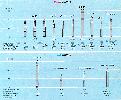 Within the past year, the Soviets have begun dismantling SS-11 silos in compensation for SS-26 deployments. The Soviets are expected to continue to dismantle SS-11 silos. By the mid 1990s, all SS-11s will probably be deactivated.
Within the past year, the Soviets have begun dismantling SS-11 silos in compensation for SS-26 deployments. The Soviets are expected to continue to dismantle SS-11 silos. By the mid 1990s, all SS-11s will probably be deactivated.
Deployment programs for all of the currently operational silo-based Soviet ICBMs are essentially complete. The command, control, and communications system that supports the Soviet ICBM force is modern and highly survivable, and the reliability of the ICBMs themselves is regularly tested by live firings from operational complexes.
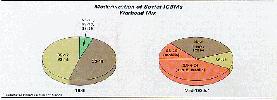 Some silo-based ICBMs in the current force that the Soviets decide not to replace with modified or new ICBMs will, in accord with past practice, be refurbished to increase their useful lifetime and reliability. During this process some system modifications also could be made.
Some silo-based ICBMs in the current force that the Soviets decide not to replace with modified or new ICBMs will, in accord with past practice, be refurbished to increase their useful lifetime and reliability. During this process some system modifications also could be made.
Force Developments. Soviet research and development on ICBMs is a dynamic process involving many programs. A modernized version or a new replacement for the liquid-propelled SS-18 is likely to be produced and deployed in existing silos through the end of the century.
 The Soviets appear to be planning on new solid-propellant ICBMs to meet many future mission requirements, including a counterforce capability. The Soviets already have two new solid-propellant ICBMs - the small, mobile SS-25 described above, now being deployed, and the SS-X-24. The medium-size SS-X-24 is well
along in its flight test program. The SS-X-24 deployment in a rail-mobile mode could begin as early as late 1986. Silo-based deployment could occur later. Early preparations for the deployment of the SS-X-24 are already underway.
The Soviets appear to be planning on new solid-propellant ICBMs to meet many future mission requirements, including a counterforce capability. The Soviets already have two new solid-propellant ICBMs - the small, mobile SS-25 described above, now being deployed, and the SS-X-24. The medium-size SS-X-24 is well
along in its flight test program. The SS-X-24 deployment in a rail-mobile mode could begin as early as late 1986. Silo-based deployment could occur later. Early preparations for the deployment of the SS-X-24 are already underway.
Activity at the Soviet ICBM test ranges indicates that two additional new ICBMs are underdevelopment. A new ICBM to replace the SS-18 is nearing the flight test stage of development. Additionally, a solid-propellant missile that may be larger than the SS-X-24 will begin flight-testing in the next few years. Both of these missiles are likely to have better accuracy and greater throwweight potential than their predecessors. A third possible development is that a MIRVed version of the SS-25 will be developed later this decade. Such a development would further expand the already large warhead inventory possessed by the Soviets. By the mid-199Os, the Soviet ICBM force will have been almost entirely replaced with new systems, a number of which may violate SALT II constraints.
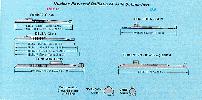 The Soviets maintain the world's largest ballistic missile submarine force. As of early 1986, the force numbered 62 modern SSBNs carrying 944 SALT-accountable nuclear-tipped missiles. Neither total includes the older 13 older GOLF II SSBs with 39 missiles which are currently assigned theater missions. The GOLF III SSB and HOTEL III SSBN are only SALT-accountable for their missile tubes. Twenty SSBNs are fitted with 336 MIRVed submarine-launched ballistic missiles (SLBMs). These
The Soviets maintain the world's largest ballistic missile submarine force. As of early 1986, the force numbered 62 modern SSBNs carrying 944 SALT-accountable nuclear-tipped missiles. Neither total includes the older 13 older GOLF II SSBs with 39 missiles which are currently assigned theater missions. The GOLF III SSB and HOTEL III SSBN are only SALT-accountable for their missile tubes. Twenty SSBNs are fitted with 336 MIRVed submarine-launched ballistic missiles (SLBMs). These  twenty units have been built and deployed within the past nine years. Two-thirds of the ballistic missile submarines are fitted with long-range SLBMs, enabling them to patrol in waters close to the Soviet Union. This affords protection from NATO antisubmarine warfare operations. Moreover, the long-range missiles allow the Soviets to fire from home ports and still strike targets in the United States.
twenty units have been built and deployed within the past nine years. Two-thirds of the ballistic missile submarines are fitted with long-range SLBMs, enabling them to patrol in waters close to the Soviet Union. This affords protection from NATO antisubmarine warfare operations. Moreover, the long-range missiles allow the Soviets to fire from home ports and still strike targets in the United States.
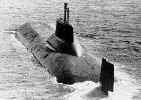 Four units of the modern Soviet ballistic missile submarine, the TYPHOON, have already been built. Each TYPHOON carries 20 SS-N-20 solid-propellant MIRVed SLBMs. The TYPHOON is the world's largest submarine with a displacement a third greater than that of the US Ohio-Class. It can operate under the Arctic Ocean icecap, adding further to the protection afforded by the 8,300-kilometer range of its SS-N-20 SLBMs. Three or four additional TYPHOONs are probably now under construction, and by the early 1990s the Soviets could
have as many as eight of these potent weapons systems in their operational force.
Four units of the modern Soviet ballistic missile submarine, the TYPHOON, have already been built. Each TYPHOON carries 20 SS-N-20 solid-propellant MIRVed SLBMs. The TYPHOON is the world's largest submarine with a displacement a third greater than that of the US Ohio-Class. It can operate under the Arctic Ocean icecap, adding further to the protection afforded by the 8,300-kilometer range of its SS-N-20 SLBMs. Three or four additional TYPHOONs are probably now under construction, and by the early 1990s the Soviets could
have as many as eight of these potent weapons systems in their operational force.
 In accordance with the SALT I Interim Agreement, the Soviets have, since 1978, removed 14 YANKEE I units from service as
ballistic missile submarines. These units had to be removed as newer submarines were produced in order for the overall Soviet SSBN force to stay within the 62 modern SSBN/950 SLBM limits established in 1972. These YANKEEs, however, have not been scrapped. Some have been reconfigured as attack or long-range cruise missile submarines.
In accordance with the SALT I Interim Agreement, the Soviets have, since 1978, removed 14 YANKEE I units from service as
ballistic missile submarines. These units had to be removed as newer submarines were produced in order for the overall Soviet SSBN force to stay within the 62 modern SSBN/950 SLBM limits established in 1972. These YANKEEs, however, have not been scrapped. Some have been reconfigured as attack or long-range cruise missile submarines.
 Force Developments. The Soviets have launched three units-two of which are currently accountable under SALT - of a new class of SSBN, the DELTA IV, which will be fitted
with the SS-NX-23 SLBM, now being flight tested. This large, liquid-propelled SLBM will have greater throwweight, carry more warheads, and be more accurate than the SS-N-18 which is currently carried on the DELTA III SSBN. The SS-NX-23 is likely to be deployed on DELTA IIIs as a replacement for the SS-N-18.
Force Developments. The Soviets have launched three units-two of which are currently accountable under SALT - of a new class of SSBN, the DELTA IV, which will be fitted
with the SS-NX-23 SLBM, now being flight tested. This large, liquid-propelled SLBM will have greater throwweight, carry more warheads, and be more accurate than the SS-N-18 which is currently carried on the DELTA III SSBN. The SS-NX-23 is likely to be deployed on DELTA IIIs as a replacement for the SS-N-18.
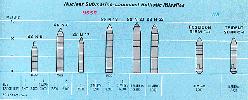 The Soviets probably will begin flight-testing a modified version of the SS-N-20. Additionally, based on past Soviet practice, they probably will develop a modified version of the SS-NX-23 before the end of the decade. Both modified
versions of the SS-N-20 and SS-NX-23 are likely to be more accurate than their predecessors and eventually may provide the Soviets with a hard-target capability for SLBMs.
The Soviets probably will begin flight-testing a modified version of the SS-N-20. Additionally, based on past Soviet practice, they probably will develop a modified version of the SS-NX-23 before the end of the decade. Both modified
versions of the SS-N-20 and SS-NX-23 are likely to be more accurate than their predecessors and eventually may provide the Soviets with a hard-target capability for SLBMs.
To ensure communications reliability, the Soviets are expected to deploy an extremely low frequency (ELF) communications system that will enable them to contact SSBNs under most operating conditions.
The five air armies subordinate to the Supreme High Command (VGK) which contain the Soviet strategic bombers and strike aircraft are:
- Smolensk Air Army;
- Legnica Air Army;
- Venitza Air Army;
- Irkutsk Air Army; and
- Moscow Air Army.
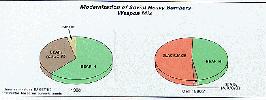 The assets of the air armies include some 180 BEAR and BISON bombers, 145 BACKFIRE bombers, 397 medium-range BLINDER and BADGER bombers, and 450 shorter range FENCER strike aircraft. The Soviets have allocated these aircraft among five air armies to cover specific theaters of military operations (Europe, Asia, and the United States) and yet retain the flexibility to reallocate aircraft as necessary during wartime. This flexibility allows the Soviets to alter the use of their strategic air assets as circumstances require. Soviet Naval Aviation assets include some 125 BACKFIRE and 230 BLINDER and BADGER bombers. Air army BEAR and BISON bombers also could be made available for maritime missions. In addition, the air armies and Soviet Naval Aviation have a total of some 530 tanker, reconnaissance, and electronic warfare
aircraft.
The assets of the air armies include some 180 BEAR and BISON bombers, 145 BACKFIRE bombers, 397 medium-range BLINDER and BADGER bombers, and 450 shorter range FENCER strike aircraft. The Soviets have allocated these aircraft among five air armies to cover specific theaters of military operations (Europe, Asia, and the United States) and yet retain the flexibility to reallocate aircraft as necessary during wartime. This flexibility allows the Soviets to alter the use of their strategic air assets as circumstances require. Soviet Naval Aviation assets include some 125 BACKFIRE and 230 BLINDER and BADGER bombers. Air army BEAR and BISON bombers also could be made available for maritime missions. In addition, the air armies and Soviet Naval Aviation have a total of some 530 tanker, reconnaissance, and electronic warfare
aircraft.
The Soviets are in the process of upgrading their long-range bomber force. The new
BEAR H bomber, which carries the AS-15 long
range cruise missile, became operational in
1984. About 40 of these aircraft are now in
the inventory. BEAR H bombers have been
observed in training flights simulating attacks
against the North American continent.

The Soviets have been producing the BACKFIRE, their most modern operational bomber, at a rate of about 30 per year. Several modifications have been made to the aircraft and further modifications are likely to upgrade performance. The BACKFIRE can perform a variety of missions including nuclear strike, conventional attack, antiship strikes, and reconnaissance. Its low-altitude capabilities make it a formidable platform for high speed military operations. Additionally, the BACKFIRE can be equipped with a probe to permit in-flight refueling to increase its range. This would improve its capabilities against the contiguous United States.
 The Soviets have assigned some FENCER
strike aircraft to the air armies. The FENCER
is a supersonic, variable-geometry-wing, all
weather fighter-bomber that has been in operation since 1974. Four variants have been produced, the most recent introduced in 1983. The FENCER is still in production, and the number assigned to air armies is likely to increase over the next few years.
The Soviets have assigned some FENCER
strike aircraft to the air armies. The FENCER
is a supersonic, variable-geometry-wing, all
weather fighter-bomber that has been in operation since 1974. Four variants have been produced, the most recent introduced in 1983. The FENCER is still in production, and the number assigned to air armies is likely to increase over the next few years.
 Force Developments. The BLACKJACK, a new long-range bomber larger than the US B-1B, is still undergoing flight-testing. The BLACKJACK will be faster than the US B-1B and may have about the same combat radius. The new bomber will be capable of carrying cruise missiles, bombs, or a combination of both and could be operational as early as 1988. It probably will be used first to replace the much less capable BEAR A bomber and then the BEAR G bomber.
Force Developments. The BLACKJACK, a new long-range bomber larger than the US B-1B, is still undergoing flight-testing. The BLACKJACK will be faster than the US B-1B and may have about the same combat radius. The new bomber will be capable of carrying cruise missiles, bombs, or a combination of both and could be operational as early as 1988. It probably will be used first to replace the much less capable BEAR A bomber and then the BEAR G bomber.
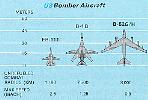 For several years the Soviet Union has been developing the MIDAS, an aerial-refueling tanker version of the Il-76/CANDID aircraft. When deployed in the near future, the new tanker can be used to support tactical and strategic operations and will expand significantly the ability of the Soviets to conduct longer range missions.
For several years the Soviet Union has been developing the MIDAS, an aerial-refueling tanker version of the Il-76/CANDID aircraft. When deployed in the near future, the new tanker can be used to support tactical and strategic operations and will expand significantly the ability of the Soviets to conduct longer range missions.
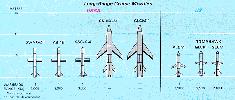 The Soviets have a sea-launched version and a ground-launched version of the AS-15 under development. The sea-launched variant,the SS-NX-21, is small enough to be fired from standard Soviet torpedo tubes. Possible launch platforms for the SS-NX-21 include three VICTOR classes of nuclear-powered attack submarines (SSNs); the reconfigured YANKEE-Class SSN; and the new AKULA-, MIKE-, and SIERRA-Class SSNs. The SS-NX-21 is expected to become operational soon and could be deployed on submarines off US and allied coasts.
The Soviets have a sea-launched version and a ground-launched version of the AS-15 under development. The sea-launched variant,the SS-NX-21, is small enough to be fired from standard Soviet torpedo tubes. Possible launch platforms for the SS-NX-21 include three VICTOR classes of nuclear-powered attack submarines (SSNs); the reconfigured YANKEE-Class SSN; and the new AKULA-, MIKE-, and SIERRA-Class SSNs. The SS-NX-21 is expected to become operational soon and could be deployed on submarines off US and allied coasts.
 The ground-launched cruise missile variant, the SSC-X-4, will probably become operational this year. Its mission will be to support operations in the Eurasian theater since the Soviets are unlikely to deploy it outside the USSR and its range is too short for intercontinental strikes. The SSC-X-4 is being developed as a mobile system and probably will follow operational procedures similar to the SS-20 LRINF system.
The ground-launched cruise missile variant, the SSC-X-4, will probably become operational this year. Its mission will be to support operations in the Eurasian theater since the Soviets are unlikely to deploy it outside the USSR and its range is too short for intercontinental strikes. The SSC-X-4 is being developed as a mobile system and probably will follow operational procedures similar to the SS-20 LRINF system.
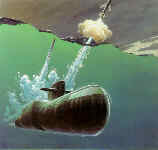 In addition to these variants of the AS-15, a larger cruise missile is under development. This missile, designated the SS-NX-24, will be flight-tested from a specially converted YANKEE-Class nuclear-powered cruise missile attack submarine (SSGN). It could become operational by 1987. A ground-based version of this missile may be developed.
In addition to these variants of the AS-15, a larger cruise missile is under development. This missile, designated the SS-NX-24, will be flight-tested from a specially converted YANKEE-Class nuclear-powered cruise missile attack submarine (SSGN). It could become operational by 1987. A ground-based version of this missile may be developed.
All of these cruise missiles probably will be equipped with nuclear warheads when first deployed and will be capable of attacking hardened targets. These systems could be accurate enough 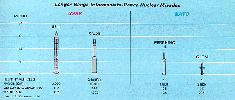 to permit the use of conventional warheads, depending on munitions developments and the types of guidance systems incorporated in their designs. With such warheads and guidance, cruise missiles would pose a significant non-nuclear threat to US and Eurasian airfields and nuclear weapons.
to permit the use of conventional warheads, depending on munitions developments and the types of guidance systems incorporated in their designs. With such warheads and guidance, cruise missiles would pose a significant non-nuclear threat to US and Eurasian airfields and nuclear weapons.
In measuring and evaluating the continuing improvements being made by the USSR's strategic forces, it is useful to bear in mind the status of US forces, the modernization of which is discussed in Chapter VIII. By mid-1986, US strategic deterrent forces will include:
- 1,000 Minuteman ICBMs;
- 17 Titan ICBMs (the Titan force will be retired by the end of 1987);
- 240 B-52G/H model bombers plus about aircraft undergoing maintenance and modification;
- 56 FB-111 bombers plus some 5 aircraft undergoing maintenance and modification;
- 17 B-1B bombers;
- 480 Poseidon (C-3 and C-4) fleet ballistic missile launchers; and
- 168 Trident fleet ballistic missile launchers.
The historic and continuing objective of US nuclear forces is deterrence of nuclear and major conventional aggression against the United States and its allies. This policy has preserved peace for a quarter-century and, in sharp contrast to the Soviet priority accorded nuclear warfighting, is based on the conviction, widely held in the US, that there could be no winners in a nuclear conflict. The United States does not now have a first-strike policy, nor do we plan to acquire a first-strike capability in the future. Rather, US deterrence policy seeks to maintain the situation in which any potential aggressor sees little to gain and much to lose by initiating hostilities against the UnitedStates or its allies. In turn, the maintenance of peace through deterrence provides the vital opportunity to pursue the US goal of eliminating nuclear weapons from the arsenals of all states.
Realizing these deterrence objectives requires the development, deployment, and maintenance of strategic forces whose size and characteristics clearly indicate to an opponent that his politico-military objectives cannot be achieved either through the employment of nuclear weapons or through political coercion based on nuclear advantages.
The Soviets began a vigorous effort to modernize and expand their intermediate-range nuclear force in 1977 with the deployment of the first SS-20 LRINF missiles. Each SS-20 is equipped with three MIRVs, more than doubling the number of LRINF warheads that existed in 1977 when the SS-20 was first deployed. The SS-20s also have significantly greater range and accuracy and a much shorter reaction time than the missiles they are replacing.
The Soviets have deployed 441 SS-20 launchers at bases west of the Urals and in the Soviet Far East. During 1984, the Soviets began construction of more new bases for the SS-20 than in any other year. Some of this construction was to facilitate the units that had been displaced by their former bases. (These bases are being converted to accommodate the SS-25 mobile ICBM) In spite of some conversions, real growth was observed in the SS-20 force in 1985.
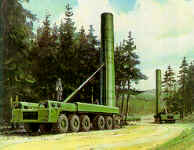 The mobility of the SS-20 system, unlike the SS-4, allows it to operate under both on- and
off-road conditions. Consequently, the survivability of the SS-20 is greatly enhanced because of the difficulty in detecting and targeting this system when it is field deployed. Further, the SS-20 launcher can be reloaded and refired, and the Soviets stockpile refire missiles.
The mobility of the SS-20 system, unlike the SS-4, allows it to operate under both on- and
off-road conditions. Consequently, the survivability of the SS-20 is greatly enhanced because of the difficulty in detecting and targeting this system when it is field deployed. Further, the SS-20 launcher can be reloaded and refired, and the Soviets stockpile refire missiles.
In addition to the SS-20s, the Soviets still maintain approximately 112 SS-4 LRINF missiles, all of which are located in the western USSR opposite European NATO.
Future Force Development. The Soviets are flight-testing an improved version of the SS-20 which is expected to be more accurate than its predecessor.
Each front commander also may have a brigade of 12 to 18 SCALEBOARD missiles available that are more accurate than the older missiles they replaced. Over 70 SCALEBOARD launchers are opposite European NATO and 40 are opposite the Sino-Soviet border. There is a battalion opposite southwest Asia/eastern Turkey, and one brigade is maintained in strategic reserve. Because of their greatly increased accuracy, the new short-range missiles can also be employed effectively with nonnuclear warheads.
In 1984, the Soviets forward-deployed the SCALEBOARD short-range ballistic missile to Eastern Europe. These front-level weapons, which normally accompany Soviet combined arms formations, are now in position to strike deep into Western Europe.
The Soviets also maintain and operate 13 GOLF II-Class ballistic missile submarines equipped with 3 SS-N-5 SLBMs each. Six GOLF Its are based in the Baltic, where they pose a threat to most of Europe, while the remaining seven patrol the Sea of Japan, where they can be employed against targets in the Far East.
Current Systems and Force Levels. Soviet armies and fronts have missile brigades equipped with 12 to 18 SS-1C SCUD SRBMs. Over 500 SCUD launchers are located opposite European NATO, and over 100 are opposite the Sino-Soviet border and in the Far East. Additionally, about 75 are opposite southwest Asia and eastern Turkey, with one brigade held in strategic reserve.
The Soviet division commander has a variety of nuclear assets available to him. The most predominant such system at division level is the unguided free rocket over ground (FROG), which is deployed in a battalion of four launchers. The Soviets are replacing FROGs with the more accurate, longer range SS-21s in some divisions opposite NATO. There are now 500 FROG and SS-21 launchers opposite NATO. Another 215 FROG launchers are opposite the Sino-Soviet border and in the Far East; about 100 are opposite southwest Asia and eastern Turkey; and about 75 are in strategic reserve.
Front commanders also have available nuclear-capable artillery tubes. Three new self-propelled, nuclear-capable artillery pieces are being added to the inventory: a 152-mm gun, a 203-mm self-propelled gun, and a 240-mm self-propelled mortar. When fully deployed, the total number of these new nuclear-capable artillery tubes plus older 152-mm howitzers that are also capable of firing nuclear rounds will exceed 10,000.
Force Developments. As in all other nuclear attack forces, the Soviets probably will continue to seek ways to improve the capabilities of their tactical missiles and nuclear artillery. These improvements will be accomplished through incremental modernization of existing systems as well as through the introduction of entirely new systems.
The Soviets probably will continue to seek improvements for their short-range ballistic missile force. Advancements in warhead capabilities, accuracy, and reliability are expected. Combined arms commanders would then have enhanced non-nuclear targeting options and more flexible and survivable SRBMs. These systems will be capable of delivering nuclear, chemical, or conventional warheads closer to the forward edge of the battle area and at greater depths within the military theater of operations.
The initial deployment of Pershing IIs and ground-launched cruise missiles (GLCMs) began in Europe in late 1983. According to the agreed schedule, the number of US LRINF missiles deployed in Europe on 31 December 1985 totaled 236 missiles on 140 launchers.These consist of 108 Pershing II missiles on 108 launchers and 128 GLCMs on 32 launchers. The deployment of US Pershing II and ground-launched cruise missiles responds to the Soviet LRINF missile threat to NATO.
With the removal of US Pershing Is and the Soviet SS-23s replacing SCUDs in Europe, the Soviet Union will maintain its substantial numerical superiority in shorter range nonstrategic nuclear missiles while improving the qualitative characteristics of its forces. The USSR also has a significant numerical advantage in SRINF aircraft and is reducing the qualitative advantage NATO has enjoyed. This is occurring despite NATO's SRINF aircraft modernization program, in which older aircraft are being replaced by the F-16 and Tornado.
Short-range nuclear forces (SNF) consist of tube artillery and missiles of much shorter range than INF. The United States' SNF is made up of Lance tactical missiles and nuclear artillery. Although SNF artillery traditionally has been an area of NATO advantage, the balance has shifted dramatically in favor of the Soviets in recent years. The Soviets also have achieved parity in overall numbers of SNF missiles.